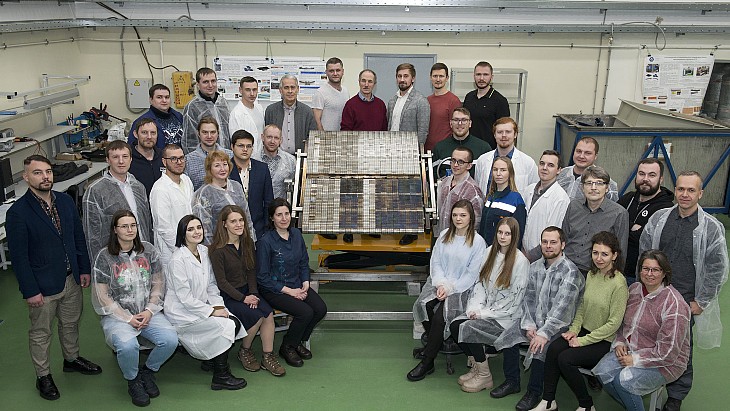The last stage of the multi-year process - from exploratory experiments on small mock-ups to manufacturing and acceptance tests on a full-scale prototype of a highly loaded panel of the first wall of the vacuum chamber of ITER - was measuring the geometric parameters of the prototype after tests.
For the ITER project, which is under construction in Cadarache in southern France, Russia's responsibilities include manufacturing 179 of the most energy intensive (up to 5 MW per square metre) panels of the first wall, which is 40% of the total area of the reactor wall.
Rustam Enikeev, deputy director general for thermonuclear and magnetic technologies at JSC NIIEFA, said: "The next step will be to obtain permission to begin mass production, this will require the preparation and approval of a large volume of documents."
ITER is a major international project to build a tokamak fusion device designed to prove the feasibility of fusion as a large-scale and carbon-free source of energy. The goal of ITER is to operate at 500 MW (for at least 400 seconds continuously) with 50 MW of plasma heating power input. It appears that an additional 300 MW of electricity input may be required in operation. No electricity will be generated at ITER.
Thirty-three nations are currently collaborating to build ITER - the European Union is contributing almost half of the cost of its construction, while the other six members (China, India, Japan, South Korea, Russia and the USA) are contributing equally to the rest. Construction began in 2010. The UK was also involved but in the wake of its departure from the EU it announced in September it was leaving Euroatom. Existing contracts are being honoured but ITER says the UK will not be part of new contracts. Switzerland is currently considered to be a "non-participating third country" as its negotiations with Euratom on an association agreement continues.
According to the ITER website, the first wall panels "are the detachable, front-facing elements of the blanket that are designed to withstand the heat flux from the plasma. These highly technological components are made of beryllium tiles bonded with a copper alloy and 316L (N) stainless steel".
Rosatom says that each panel consists of 40 so-called fingers and the overall dimensions of one panel are 2 metres by 1.5 metres by 0.5 metres, with a weight of about 800 kg. They can be in different shapes, with scientists at JSC NIIEFA developing about 40 design options. It added that NIIEFA specialists "gained unique experience and competencies in the development of the design of plasm-facing components" and the experience would benefit "future national projects in the field of development and creation of plasma-facing components for controlled thermonuclear fusion installations".
Russian record for pulse duration in a tokamak
Meanwhile scientists at the Kurchatov Institute have achieved a discharge with a plasma current of 260 kiloamperes (kA) lasting more than two seconds, a new duration record for tokamaks in Russia.
The institute said that temperatures in the plasma in the T-15MD tokamak hit 40 million degrees Celsius during the experiment, which took place on 15 December.





_18570.jpg)
_18938.jpg)
_33584.jpg)
_82983.jpg)





